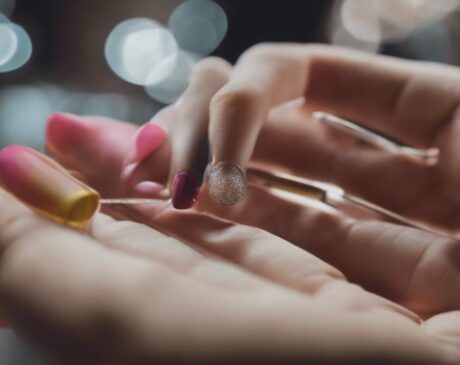Is LED Safer Than UV for Nails?
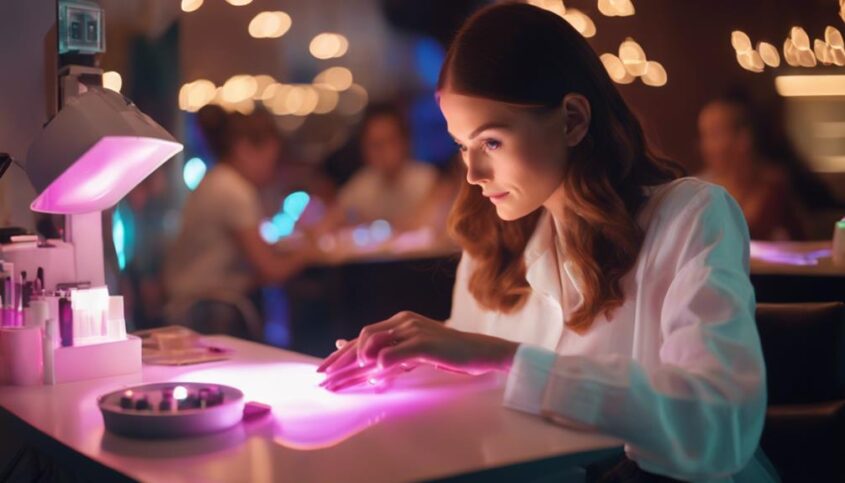
LED nail lamps are safer than UV for nails. They emit lower levels of UV radiation, reducing risks to your skin. LED cures gel polish efficiently without excessive heat. They are durable and energy-efficient. UV lamps pose concerns about UV exposure risks, including skin cancer. LED outperforms UV in efficiency. Consider the health implications of UV exposure for your skin. Prioritize safety and effectiveness when choosing your nail treatment.
Key Takeaways
- LED lamps emit lower UV levels, reducing skin damage risks.
- UV exposure from lamps can increase skin cancer risk.
- LED treatments offer quicker curing times for gel polish.
- Understanding the risks helps in making informed choices.
- Consider personal preferences and priorities when choosing between LED and UV treatments.
Understanding LED Nail Lamps
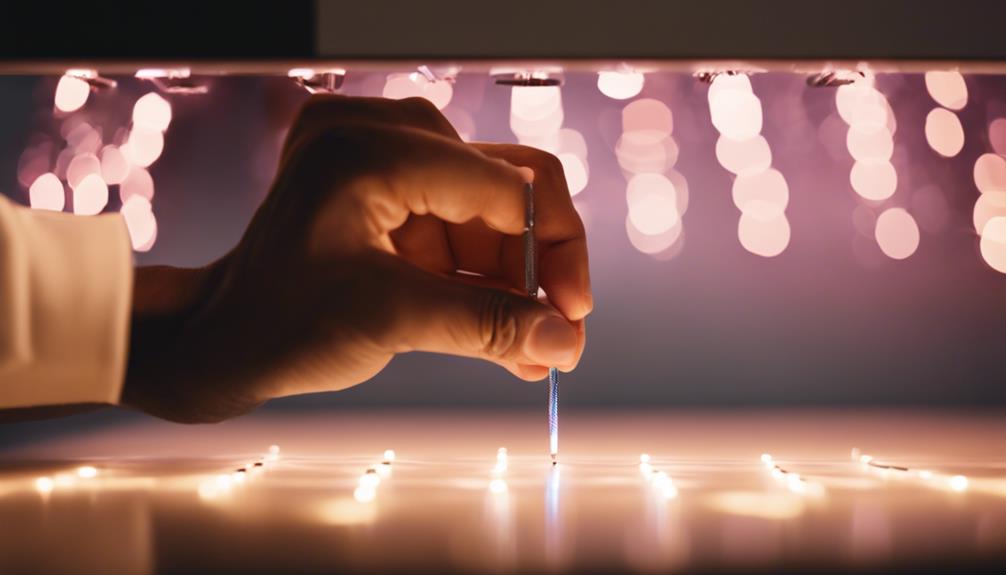
When using LED nail lamps, ensure you understand their functionality and benefits. LED lamps are quick and efficient, curing gel polish in a matter of seconds. This speed allows you the freedom to continue with your day without waiting around for your nails to dry. The low heat emission of LED lamps is another advantage, reducing the risk of discomfort or damage to your nails or skin. Additionally, LED lamps are durable and long-lasting, providing you with countless uses without the need for frequent replacements.
LED nail lamps are also known for their energy efficiency, consuming less power than traditional UV lamps. This not only saves you money in the long run but also aligns with a more environmentally conscious lifestyle. The compact size of LED lamps makes them portable and easy to store, giving you the flexibility to do your nails wherever and whenever you please. Understanding these benefits allows you to make informed choices that suit your lifestyle and preferences.
Exploring UV Nail Lamps
UV nail lamps are commonly used in nail salons for curing gel manicures. However, there are concerns about the potential risks associated with UV exposure from these lamps. LED nail lamps are an alternative to UV lamps and are considered safer because they emit less UV radiation. When it comes to efficiency, LED lamps are also more energy-efficient and longer-lasting compared to traditional UV lamps. These factors make LED nail lamps a popular choice among both professionals and consumers.
UV Exposure Risks
Exploring the use of UV nail lamps may lead to a better understanding of the associated risks. UV exposure from these lamps can pose potential risks to your skin, such as premature aging and an increased risk of skin cancer. While the amount of UV radiation emitted by these lamps is relatively low compared to natural sunlight, frequent and prolonged exposure can still have adverse effects.
To minimize these risks, consider using broad-spectrum sunscreen on your hands before using UV nail lamps. Additionally, wearing UV-protective gloves or using LED nail lamps as an alternative can help reduce your exposure. Being aware of the potential risks associated with UV nail lamps empowers you to make informed decisions about your nail care routine.
LED Efficiency Comparison
LED nail lamps offer a more efficient and safer alternative to traditional UV nail lamps for nail care.
LED lamps cure gel polish faster than UV lamps, reducing manicure time by up to half. With LED technology, you can skip the long drying periods associated with UV lamps, allowing you to enjoy your freshly painted nails sooner.
LED lamps also have a longer lifespan than UV lamps, saving you money in the long run. Additionally, LED lights are more energy-efficient, consuming less power and being more environmentally friendly.
When it comes to efficiency and effectiveness, LED nail lamps outshine traditional UV lamps, providing a quicker, safer, and more convenient nail care experience.
Emission of UV Rays
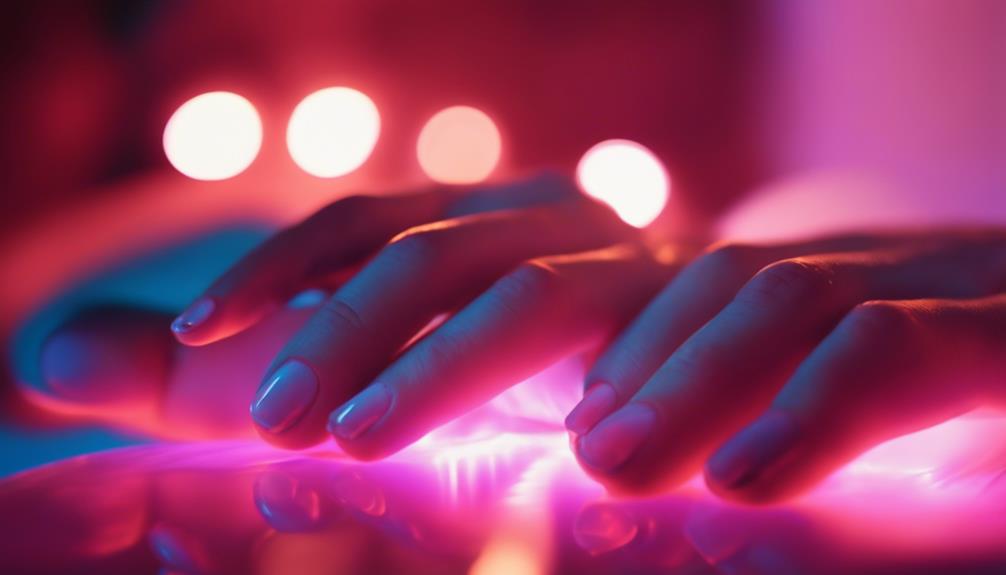
When using UV nail lamps, you're exposed to UV rays that can increase the risk of skin damage and potentially lead to skin cancer.
LED lamps, on the other hand, emit lower levels of UV rays, making them a safer option for your nails and skin health.
Understanding the differences in UV emission between these two types of nail lamps is crucial for making an informed choice about your nail care routine.
UV Exposure Risks
Exposure to UV rays poses potential risks to your skin and overall health when undergoing nail treatments. UV rays can contribute to premature aging, skin damage, and an increased risk of skin cancer.
Prolonged exposure to UV radiation during nail curing processes may lead to skin discoloration, wrinkles, and other harmful effects. It's important to be aware of these risks and take precautions to minimize UV exposure. Consider using protective measures like sunscreen or UV-blocking gloves during nail treatments to reduce the potential harm to your skin.
Being proactive about protecting yourself from UV rays can help maintain the health and appearance of your skin in the long run.
LED Safety Benefits
To safeguard against potential risks associated with UV exposure during nail treatments, considering the safety benefits of LED technology is essential. LED lamps emit significantly lower levels of UV rays compared to traditional UV lamps used in nail salons. This reduction in UV exposure helps minimize the risk of skin damage and premature aging caused by UV radiation. With LED technology, you can enjoy your manicures without worrying about excessive UV exposure.
Additionally, LED lights don't require any drying time, making your nail treatments faster and more efficient. By opting for LED over UV, you prioritize your safety and well-being while still achieving beautiful nails. Make the switch to LED for a safer and more enjoyable nail experience.
Impact on Skin Health
Considering the potential effects on skin health, it's crucial to understand the differences between LED and UV nail treatments. LED lamps emit lower levels of UV radiation compared to traditional UV lamps, which may reduce the risk of skin damage. However, both LED and UV light can still have some impact on skin health.
UV exposure from nail treatments can lead to skin aging, such as wrinkles and age spots, as well as an increased risk of skin cancer. It's important to apply broad-spectrum sunscreen to your hands before any nail treatment to help protect your skin from UV damage.
LED lights are considered safer for skin health because they emit less UV radiation, but it's still advisable to take precautions. If you're concerned about skin health, you may want to opt for LED nail treatments over traditional UV ones. Additionally, always follow the manufacturer's guidelines and recommendations for safe and healthy nail treatments.
Potential Nail Damage
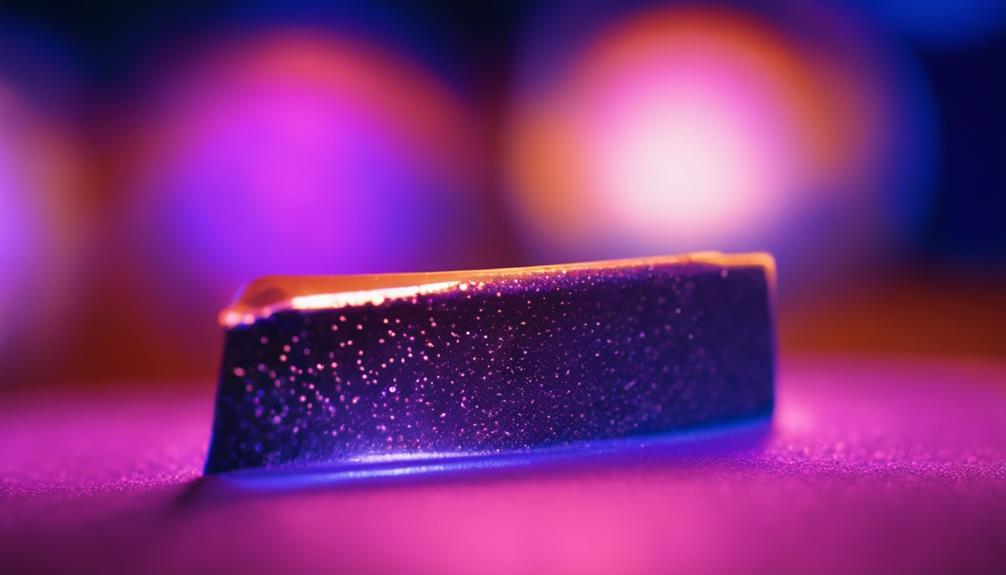
To prevent nail damage, it's crucial to understand how LED and UV nail treatments can affect the health and appearance of your nails. Both LED and UV nail treatments have the potential to cause damage if not used properly. UV lamps emit higher amounts of UV radiation compared to LED lamps, which can lead to issues like nail brittleness, dryness, and discoloration over time. On the other hand, LED lamps cure nails faster, reducing the overall exposure time to potentially harmful rays. However, prolonged or frequent use of any nail curing method without proper precautions can still result in damage to your nails.
| Potential Nail Damage | Description |
|---|---|
| Nail Brittleness | Nails become weak and prone to breakage. |
| Dryness | Lack of moisture in the nails, leading to brittleness. |
| Discoloration | Nails may develop a yellowish tint over time. |
Comparing Safety Measures
When comparing safety measures between LED and UV nail treatments, prioritize understanding the potential risks associated with each method.
LED lamps are generally considered safer than UV lamps due to the lower levels of UV radiation they emit. However, both types of lamps can pose risks if not used correctly.
To ensure your safety during nail treatments, consider wearing broad-spectrum sunscreen on your hands to protect your skin from potential UV exposure. Additionally, using protective gloves can minimize direct contact with the products and reduce the risk of skin irritation or allergic reactions.
It's essential to follow the manufacturer's guidelines for curing times and distances to prevent overexposure to the light. By being mindful of these safety measures, you can enjoy your nail treatments without compromising your health.
Health Implications
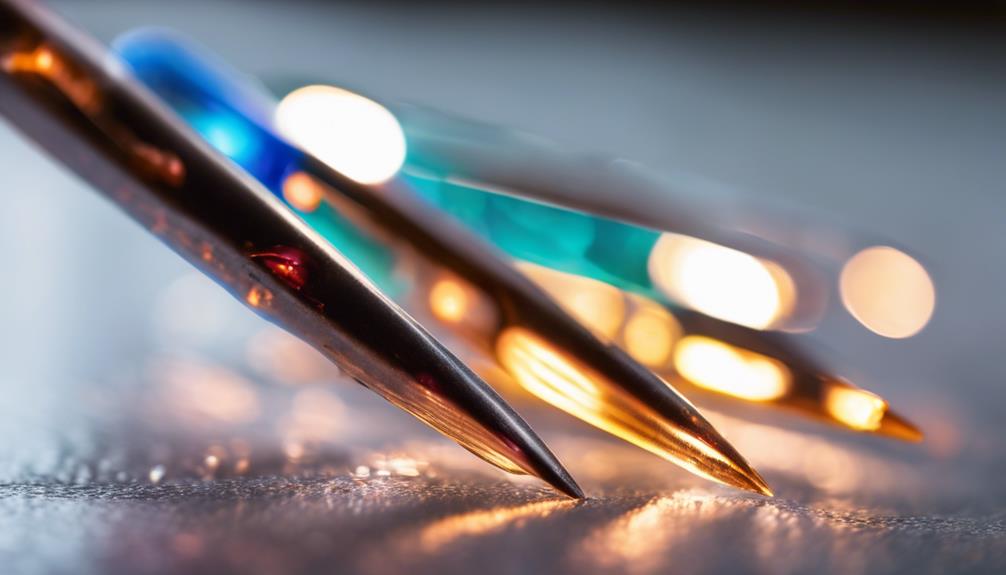
Discussing the Health Implications surrounding LED and UV nail treatments can shed light on potential risks to your well-being. When it comes to your health, it's crucial to be aware of the potential consequences of frequent exposure to these nail treatments.
Both LED and UV lamps emit ultraviolet radiation, which can penetrate the skin and potentially cause harm. Prolonged or repeated exposure to UV radiation may increase the risk of skin damage, premature aging, and even skin cancer.
Furthermore, the use of these devices in salons may also pose risks due to improper handling or maintenance. It's essential to ensure that the nail technician follows safety protocols, such as using protective measures like sunscreen or gloves during the treatment. Additionally, inadequate ventilation in salons can lead to inhaling harmful chemicals present in nail products, which can have adverse effects on your respiratory health.
Being informed about these health implications can empower you to make educated decisions about your nail treatments and prioritize your well-being. Remember, your health should always come first.
Making an Informed Choice
Consider the potential risks and benefits of LED and UV nail treatments before making your decision. LED nail treatments offer quicker curing times, are less likely to cause skin damage, and emit lower levels of UV radiation compared to traditional UV treatments. However, UV treatments have been used for a longer time and may be more effective for certain types of polish.
When making your choice, think about your personal preferences and priorities. If you prioritize speed and lower UV exposure, LED may be the better option for you. On the other hand, if effectiveness with a longer history of use is more important to you, UV treatments might be the way to go.
Ultimately, the decision is yours to make based on what matters most to you. Remember to consider factors like convenience, potential health risks, and the specific needs of your nails before deciding on the best treatment for you.
Frequently Asked Questions
Are There Any Long-Term Health Effects Associated With Using LED Nail Lamps?
Using LED nail lamps can have long-term health effects if not used properly. To avoid potential harm, ensure you follow safety guidelines, limit exposure, and consider using protective measures. Your health is important.
Can UV Nail Lamps Cause Skin Cancer With Frequent Use?
Frequent use of UV nail lamps can increase your risk of skin cancer. Remember, moderation is key. Opt for LED lamps as they emit lower levels of UV radiation, reducing potential harm. Prioritize your safety and nail health.
How Do LED and UV Nail Lamps Differ in Terms of Energy Consumption?
LED nail lamps differ from UV lamps in energy consumption. They use less power, making them more energy-efficient. This can save you money on electricity bills in the long run. Consider LED for a greener and cost-effective choice.
Are There Any Specific Safety Precautions Recommended When Using LED or UV Nail Lamps?
When using LED or UV nail lamps, ensure eye protection and follow manufacturer's guidelines. Like a navigator on a clear course, you can enjoy your nail treatment with confidence and freedom. Stay safe and let your nails shine!
Can LED or UV Nail Lamps Cause Any Adverse Effects on the Eyes With Prolonged Exposure?
Prolonged exposure to LED or UV nail lamps can lead to adverse effects on your eyes. Protect your vision by wearing proper eyewear. Prioritize eye safety when using these devices, as your eyes deserve care.



